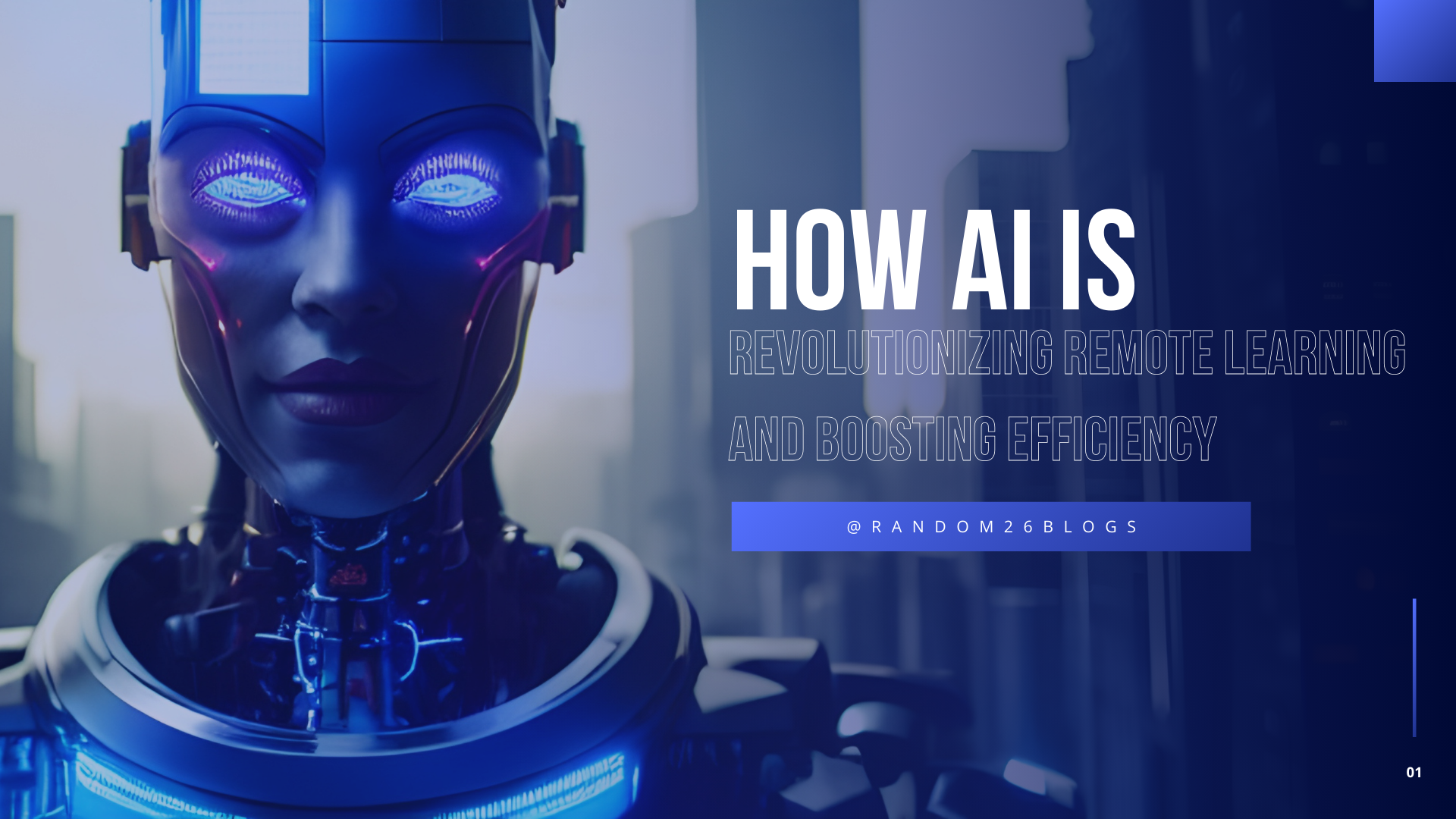
Table of Contents
The rise of digital technologies has opened up a world of opportunities for various sectors, and education is no exception. With the increasing need for distance learning, particularly during the COVID-19 pandemic, Artificial Intelligence (AI) has emerged as a transformative force that is reshaping how we approach remote education. AI in education isn’t just a futuristic concept—it’s already here, fundamentally improving the way students learn and teachers teach in virtual environments.
In this blog post, we’ll explore how AI enhances the efficiency of remote learning, making it more personalized, engaging, and productive. Let’s dive deeper into the ways AI is transforming education, addressing the challenges of traditional learning models, and creating a more inclusive and effective learning environment.
The Role of AI in Remote Learning
Remote learning has been around for a while, but its popularity skyrocketed when schools and universities had to shift to online platforms due to global disruptions. While traditional online learning systems provided flexibility, they often lacked the tailored approach needed to fully engage every learner. This is where AI steps in.
AI technology in education involves using machine learning algorithms, natural language processing, and data analytics to assess students’ performance and tailor educational experiences to their individual needs. From personalizing the learning journey to optimizing time and resources, AI offers numerous benefits to both students and educators.
1. Personalized Learning Paths
One of the most significant advantages of AI in remote education is its ability to personalize the learning experience. Traditionally, classrooms followed a “one-size-fits-all” approach, where all students were expected to follow the same pace and curriculum. This method often left some students struggling while others felt under-challenged. AI solves this problem by analyzing data on each student’s learning patterns, pace, and comprehension level.
How AI Personalizes Learning:
- Progress Analysis: AI tracks a student’s progress in real-time and adjusts their learning plan based on their performance. If a student is excelling in a subject, the system will provide more challenging materials, while students facing difficulties will receive more foundational support.
- Individual Recommendations: AI can recommend extra learning materials or offer additional exercises in areas where a student might be struggling. This helps students master a subject at their own pace.
- Identifying Strengths and Weaknesses: Through continuous monitoring, AI systems can pinpoint a student’s strengths and areas for improvement. This allows educators to address specific challenges and avoid a generalized teaching method.
2. Efficient Time and Resource Management for Educators
AI doesn’t just benefit students; it also significantly reduces the workload for teachers. In a traditional learning setup, teachers often have to manage large groups of students, track progress, and customize learning plans, which can be overwhelming. AI can automate many of these tasks, freeing up time for educators to focus on more critical, creative aspects of teaching.
- Automation of Routine Tasks: AI-powered platforms can automatically grade assignments, track student progress, and provide feedback. This reduces the administrative burden on teachers and allows them to dedicate more time to personalized student interactions.
- Adaptive Support: While teachers focus on students who require more attention, AI can provide basic support to others, answering questions or providing resources that suit their learning needs.
3. Improved Student Motivation and Engagement
A significant challenge in remote learning is maintaining student motivation and engagement, especially when the learning experience feels disconnected from real-life interactions. AI helps address this by creating adaptive systems that keep students engaged based on their performance.
- Adaptive Learning Systems: AI systems adjust the difficulty level of lessons in real-time. If a student is struggling, the system offers simpler explanations or easier tasks, while higher-performing students are presented with more challenging material. This reduces the frustration of tasks being too difficult or too simple.
- Interactive Learning: AI-driven platforms often incorporate interactive elements such as quizzes, games, and instant feedback, making learning more engaging and stimulating.
4. AI in Distance Learning Platforms: Examples of Success
Many EdTech companies and platforms have successfully integrated AI to enhance the remote learning experience. For instance, platforms like Coursera, Khan Academy, and Duolingo use AI algorithms to assess learner performance and offer personalized learning paths. Some of these platforms also utilize AI chatbots to answer student queries instantly, providing 24/7 support for learners across the globe.
AI-powered tutoring systems like Squirrel AI in China have demonstrated how adaptive learning models can create personalized learning journeys, analyzing each student’s responses and progress to offer tailor-made study plans.
5. Enhancing Lifelong Learning
The benefits of AI in remote learning go beyond just formal education. With the rise of AI-based adaptive learning platforms, people of all ages can continue learning throughout their lives. Whether it’s acquiring new skills for career advancement or personal growth, AI enables a more accessible and tailored approach to lifelong learning.
AI can assess what learners already know and build a learning path that focuses only on filling the gaps in their knowledge, making the learning process more efficient and less time-consuming. This is particularly useful for adult learners who may be balancing work, family, and study.
The Future of AI in Education
The future of education is undoubtedly intertwined with AI. As the technology continues to evolve, it will further enhance the personalization of education, optimize the use of resources, and make learning accessible to a broader audience.
We can expect to see more sophisticated AI tools that are capable of providing real-time insights to both students and teachers, enabling them to make data-driven decisions. AI could also be used to create virtual classrooms where students and teachers from across the globe can collaborate seamlessly, breaking down geographical barriers.
Furthermore, AI will likely play a more significant role in upskilling and reskilling workers as industries evolve. This means that AI’s impact on education will not only shape the academic world but also the future workforce.
AI is Revolutionizing
Artificial Intelligence is transforming remote learning by making it more efficient, personalized, and engaging. With AI-driven systems, students receive tailored educational experiences that cater to their individual needs, while teachers benefit from automation and data-driven insights that make their jobs easier. As AI continues to evolve, it will play an even greater role in the education sector, opening up new opportunities for students and educators alike.
By leveraging AI in remote learning, we are creating an educational landscape that is more inclusive, accessible, and effective—one that empowers learners and educators to thrive in a rapidly changing world.







https://neighbourhood-london.com/